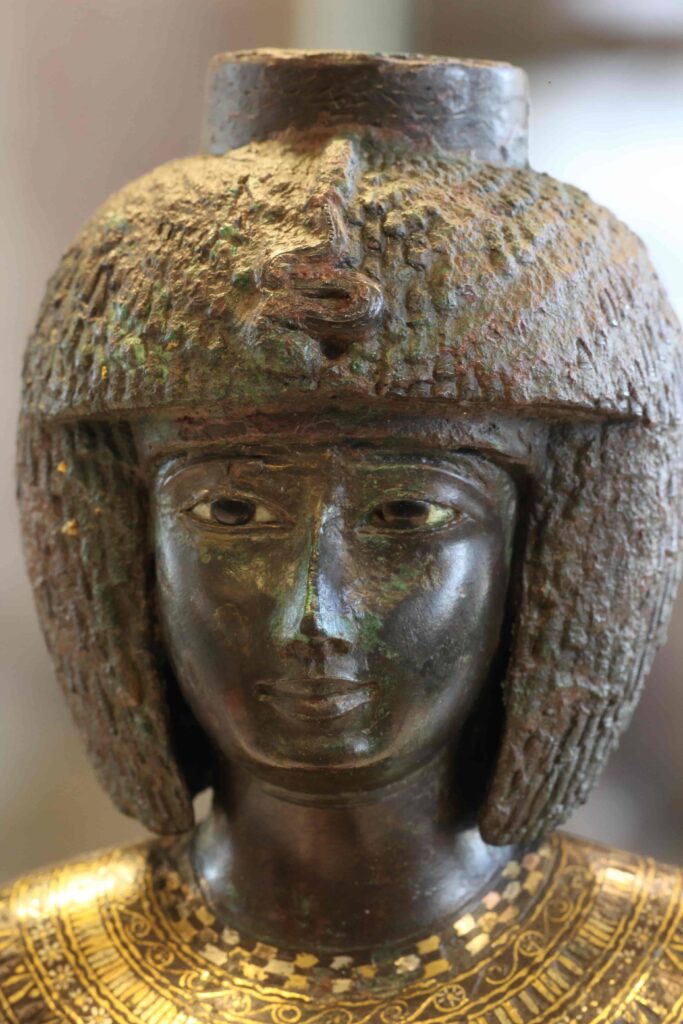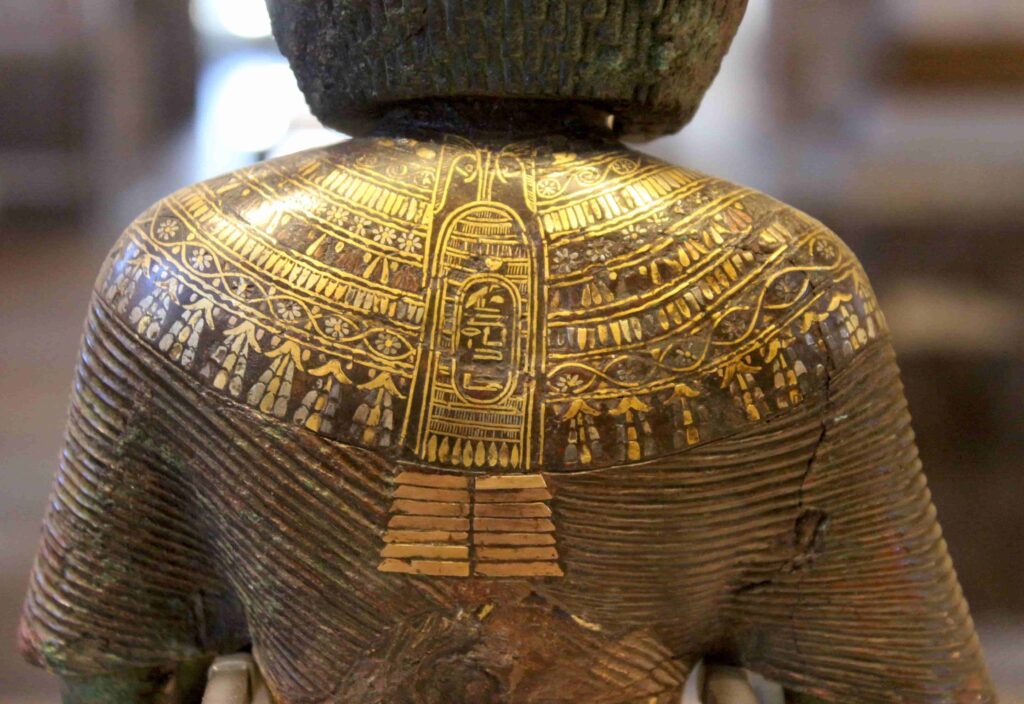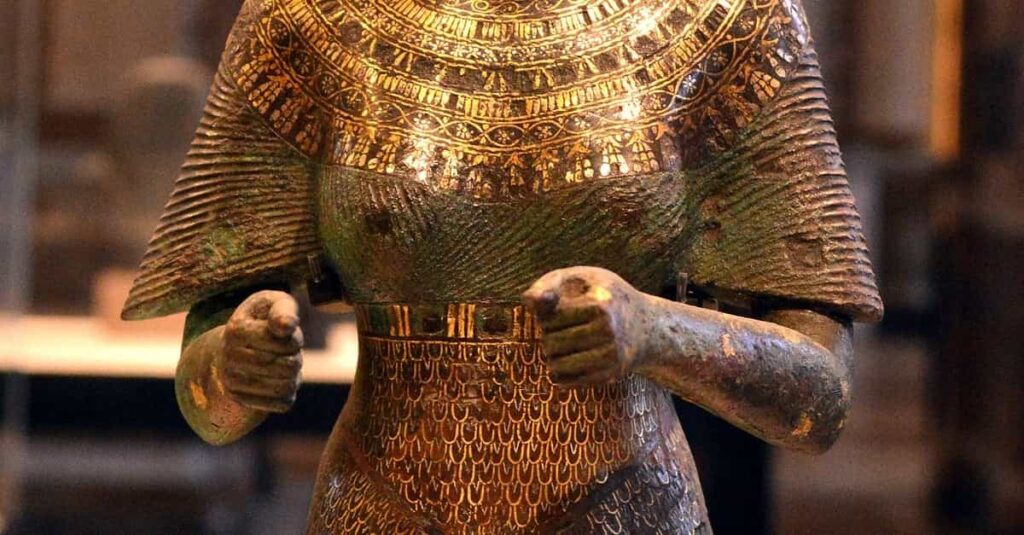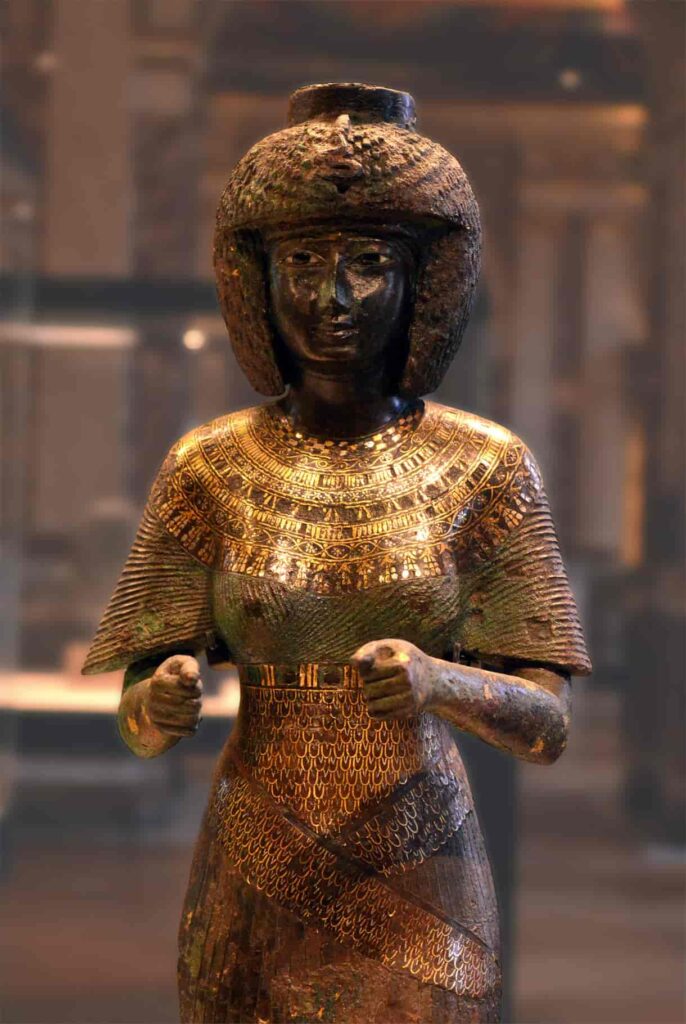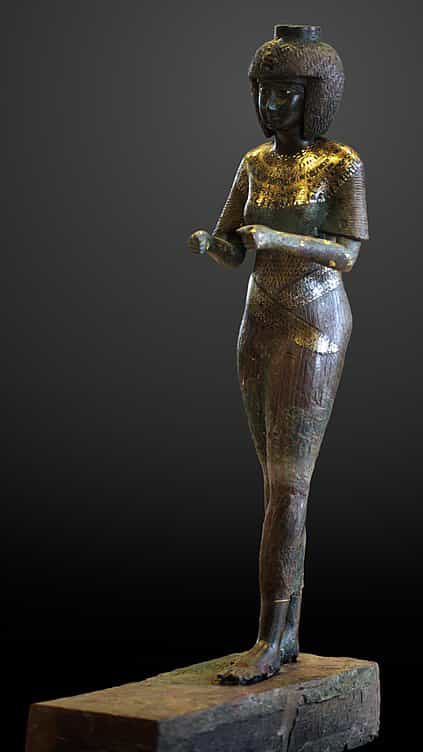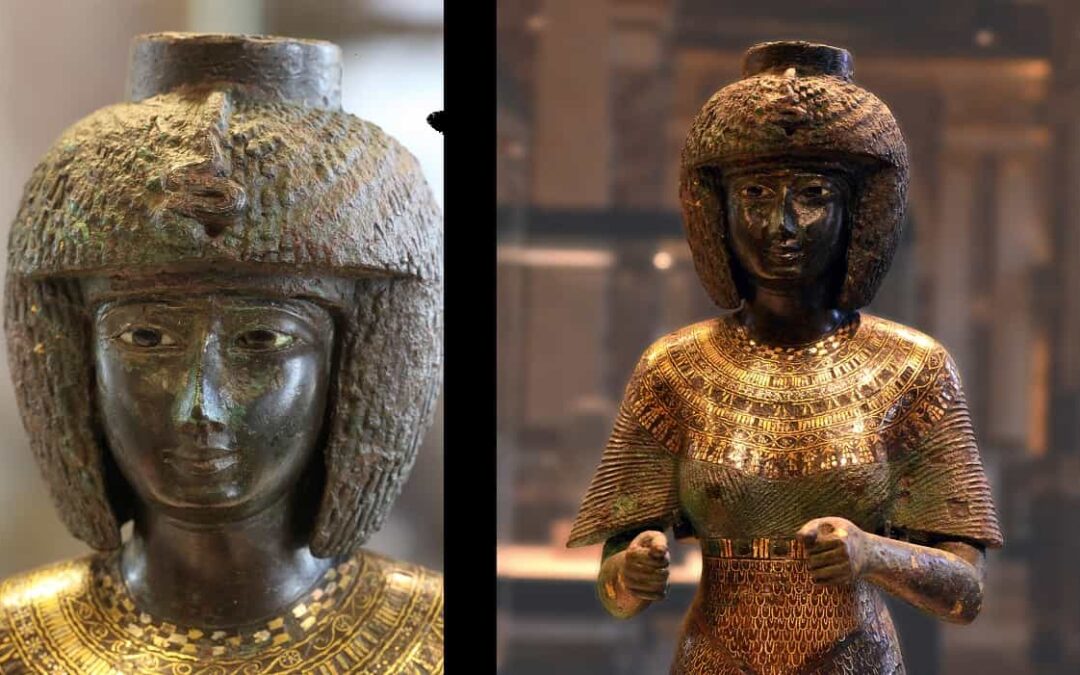The Statue of the Divine Worshiper Karomama, also known as the Karomama Statue, is a sculpture dating from approximately 945 BC to 715 BC and belonging to ancient Egyptian art.
It was made during the Third Intermediate Period of ancient Egypt (between 1,070 BC and 650 BC), specifically during the Twenty-second Dynasty of Ancient Egypt.
It was found in Karnak, located on the eastern bank of the Nile River (Egypt).
In ancient times, it was part of the funerary complex of Thebes (currently next to Luxor).
In 1929, it was acquired by the French scholar, philologist, and orientalist Jean-François Champollion, becoming part of his art collection.
Later, it was acquired by the Louvre Museum in Paris (France), where it became part of its art collection within the department of Egyptian antiquities.
Who was Karomama?
Karomama, also known as Karomama Meritmut I, was a high priestess of the god Amun (celestial god and god of creation), also known as the Divine Worshiper of Amun.
The power of the Divine Adorer was a guarantee to facilitate the transfer of power from one pharaoh to another.
She was the daughter of Pharaoh Osorkon II, who reigned from approximately 874 BC to 850 BC during the Third Intermediate Period of ancient Egypt.
Description
The sculpture has a height of 59 cm, a width of 35 cm, and a diameter of 12.5 cm.
It is made of bronze, gold, silver, and electro, using carving, inlaying, and lost wax casting techniques.
It should be noted that the sculpture’s bronze is inlaid with gold and silver using the damascene technique.
She is dressed in a tight and close-fitting mesh tunic, which has short sleeves (at elbow height) and ends in points.
The clothing is made with gold inlays.
She also wears a necklace made of pearls and stones with flowers.
On top of her head is a short, rounded wig with ringlets that frame her face.
Apart from the wig, she wears the uraeus (an upright cobra, a representation of the goddess Wadjet) at the height of her forehead.
On her face are a straight nose, a small mouth with curved lips in a small smile, and almond-shaped eyes.
Her arms are flexed, and her hands are extended forward. Both hands are represented as holding something despite being empty.
Researchers believe the hands in the original sculpture held the sistrums (used during religious ceremonies and rituals).
The left leg is pushed forward, while the right leg is behind; both feet are fully supported on the base.
The entire sculpture rests on a pedestal or rectangular base; there is a hieroglyphic inscription on the base, and an approximate translation reads:
“Beloved of Amun-Ra, who is the divine husband, the Divine Adorer.”
As for the composition highlights, the balanced proportions of the body, as well as the inlays and juxtaposition of gold, silver, and different metal alloys (gold-copper, gold-silver) of the clothing, particularly stand out.
Finally, the Statue of the Divine Worshiper Karomama is considered one of the best sculptures in ancient Egyptian art, representing the female model at the end of the 17th dynasty and the beginning of the 18th dynasty in Egypt.
It is currently in the Louvre Museum in Paris, France.
